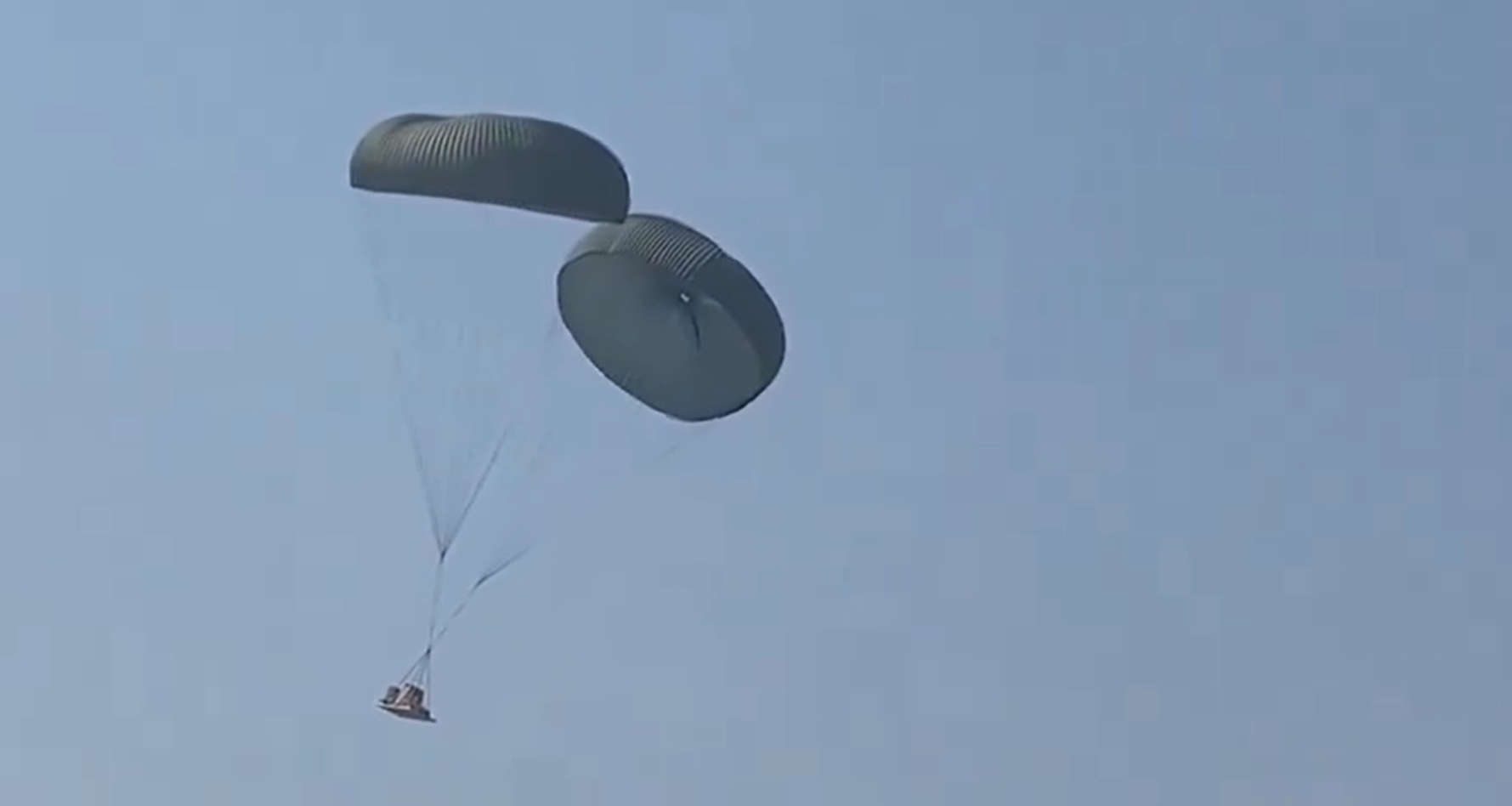The Indian Air Force (IAF) tried the Bharat Health Initiative for Sahyog, Hita, and Maitri (BHISHM) portable hospital cubes for the first time on Tuesday in Agra, Uttar Pradesh. The tests went well.
The purpose of the test was to see how well portable hospitals could be used in situations across the country. The Air Delivery Research and Development Establishment (ADRDE) in Agra used specially made parachutes to drop the movable hospital from 1,500 feet, which weighed about 720 kg.
The IAF said in a post on X that an IAF C-130 did a test paradrop of the Arogya Maitri Disaster Brick. This is a new idea that helps with quick disaster relief. These “bricks” hold important survival gear for disaster-stricken areas that can’t be reached any other way. The trial took place with the help of an Army Para Field Hospital, and Air Mshl Rajesh Vaidya, DGMS (Air), Chairman of the Arogya Maitri Task Force, was there to watch. The exact drop made sure that the contents were not damaged, so the trial was a success.
Government of Information and Broadcasting said in a press release that the cubes are part of “Project BHISHM,” which can help up to 200 people and focuses on quick reaction and full care.
Indian Air Force tests BHISHM Cube, a state-of- the-art indigenous mobile hospital, for airdrop in Agra.
This innovative technology is a great leap forward in providing rapid and comprehensive medical aid during emergencies anywhere.https://t.co/tUARKouKCz pic.twitter.com/bA8W2c7CAR
— Dr Mansukh Mandaviya (मोदी का परिवार) (@mansukhmandviya) May 15, 2024
“The Aid Cube is equipped with a number of innovative tools designed to improve disaster response and medical support during emergencies,” the press release said. For better coordination, real-time monitoring, and efficient control of medical services in the field, it combines Artificial Intelligence (AI) and data analytics.
There are two main cages, and each one has 36 mini blocks. Each unit has 72 parts that are very flexible and easy to move around. They can be moved by hand, on bikes, or by drones.
The Aid Cube can be set up in just 12 minutes during mass casualty incidents (MCIs), providing everything from simple first aid to advanced medical and surgical care. This is very important because it closes the crucial time gap between initial care and definitive care. In an emergency, this could save lives in the first hours.
It has medical facilities like an operating room, X-ray machines, blood testing machines, ventilators, and tools for treating wounds like shooting wounds, burns, fractures, and heavy bleeding. Essentials like a small generator, stretchers, portable medical equipment, medicines, and food are in every unit.
The BHISHM cubes are waterproof, light, and can be put together in a number of different ways. This makes them perfect for situations. Dropping them from the sky or moving them on the ground can send them anywhere.
The news statement also said, “A key feature of the Cube is advanced medical equipment that is RFID-tagged for easy repackaging and redeployment.” The cutting-edge BHISHM software system built into the tablet gives operators the ability to quickly find things, keep track of how they’re being used and when they expire, and make sure they’re ready for future deployments.
